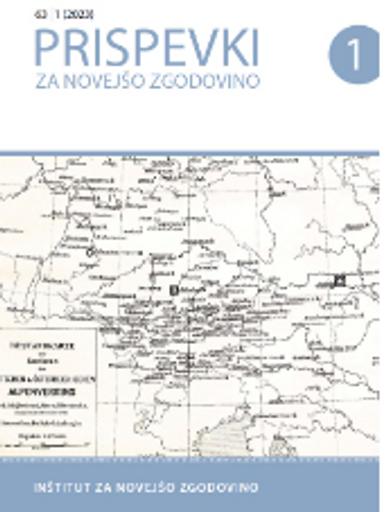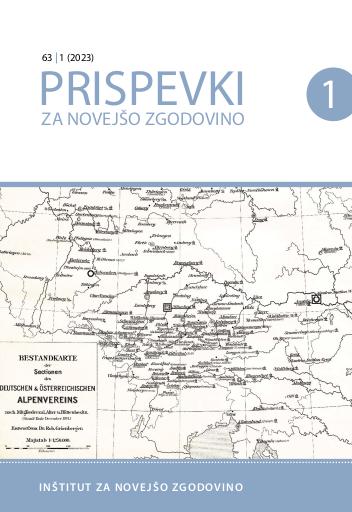/
Serijske publikacije
/
Prispevki za novejšo zgodovino
Reševanje prostorskega vprašanja Zavoda za slepe otroke in mladino v Kočevju

Soavtor(ji):Jure Gašparič (gl. ur.), Andreja Jezernik (lekt.), Mojca Šorn (drugo), Studio S.U.R (prev.)
Leto:2023
Založnik(i):Inštitut za novejšo zgodovino, Ljubljana
Jezik(i):slovenščina, angleščina
Vrst(e) gradiva:besedilo
Ključne besede:Zavod za slepe otroke in mladino, trideseta leta 20. stoletja, Slovenija, Institute for Blind Children and Youth, the 1930s, Slovenia
Avtorske pravice:

To delo avtorjev Mojca Šorn, Dunja Dobaja je ponujeno pod Creative Commons Priznanje avtorstva-Nekomercialno-Deljenje pod enakimi pogoji 4.0 Mednarodna
Datoteke (1)

Ime:PNZ_01_2023_web.pdf
Velikost:8.04MB
Format:application/pdf
Stalna povezava:https://hdl.handle.net/11686/file36285
Opis
Based on the Ban’s Council discussions and the conference minutes of the Institute for Blind Children and Youth in Kočevje, the authors of the following contribution outline the problems of the Institute, caused mainly by deficient financing. They establish that one of the most severe difficulties – inadequate accommodation capacities or the lack of facilities crucial for living and working – meant that during the 1930s, the Institute did not possess the capacity to implement the educational process comprehensively and appropriately.
Metapodatki (12)
- identifikatorhttps://hdl.handle.net/11686/56633
- naslov
- Reševanje prostorskega vprašanja Zavoda za slepe otroke in mladino v Kočevju
- Resolving the Question of the Location of the Institute for Blind Children and Youth in Kočevje
- avtor
- Mojca Šorn
- Dunja Dobaja
- soavtor
- Jure Gašparič (gl. ur.)
- Andreja Jezernik (lekt.)
- Mojca Šorn (drugo)
- Studio S.U.R (prev.)
- predmet
- Zavod za slepe otroke in mladino
- trideseta leta 20. stoletja
- Slovenija
- Institute for Blind Children and Youth
- the 1930s
- Slovenia
- opis
- Based on the Ban’s Council discussions and the conference minutes of the Institute for Blind Children and Youth in Kočevje, the authors of the following contribution outline the problems of the Institute, caused mainly by deficient financing. They establish that one of the most severe difficulties – inadequate accommodation capacities or the lack of facilities crucial for living and working – meant that during the 1930s, the Institute did not possess the capacity to implement the educational process comprehensively and appropriately.
- založnik
- Inštitut za novejšo zgodovino
- datum
- 2023
- 16. 06. 2023
- tip
- besedilo
- jezik
- Slovenščina
- Angleščina
- jeDelOd
- pravice
- licenca: ccByNcSa
